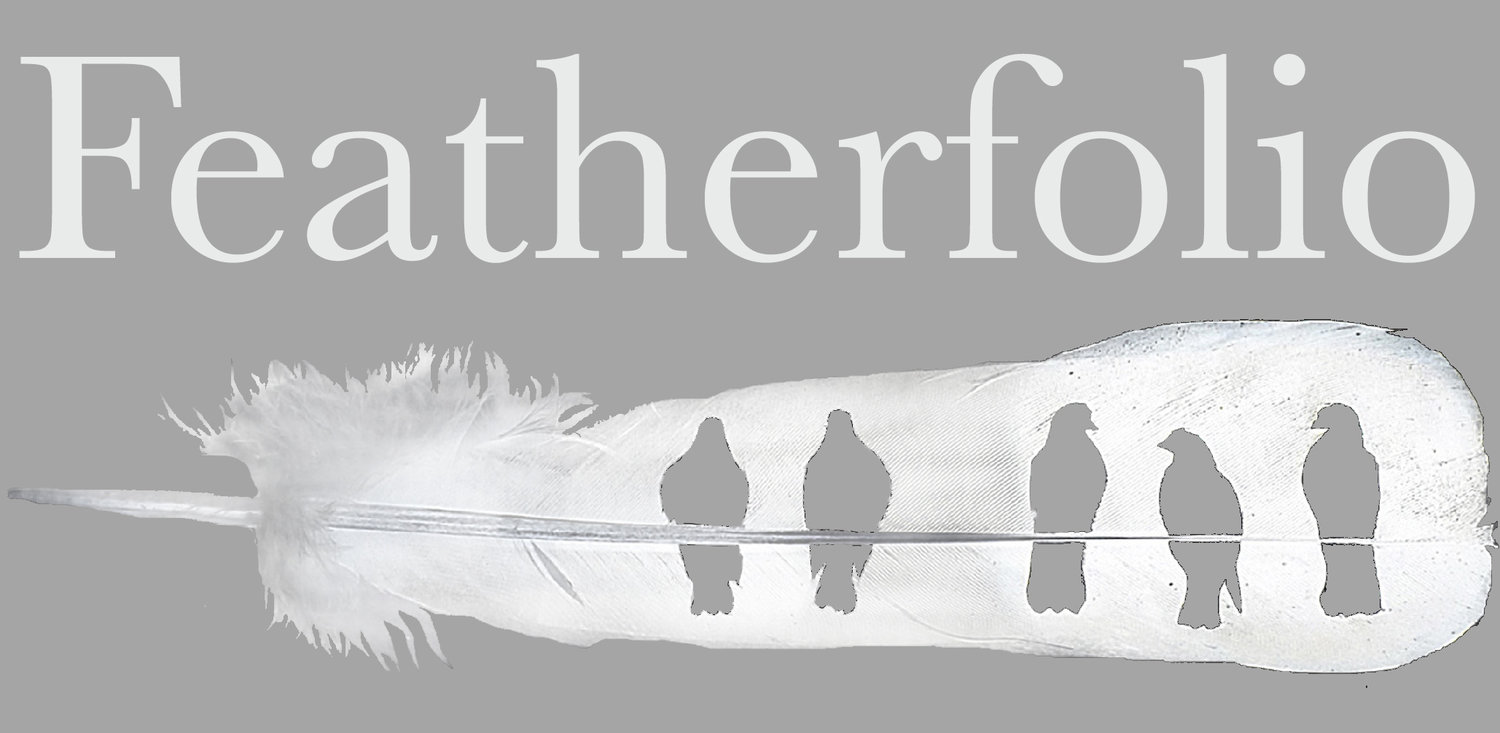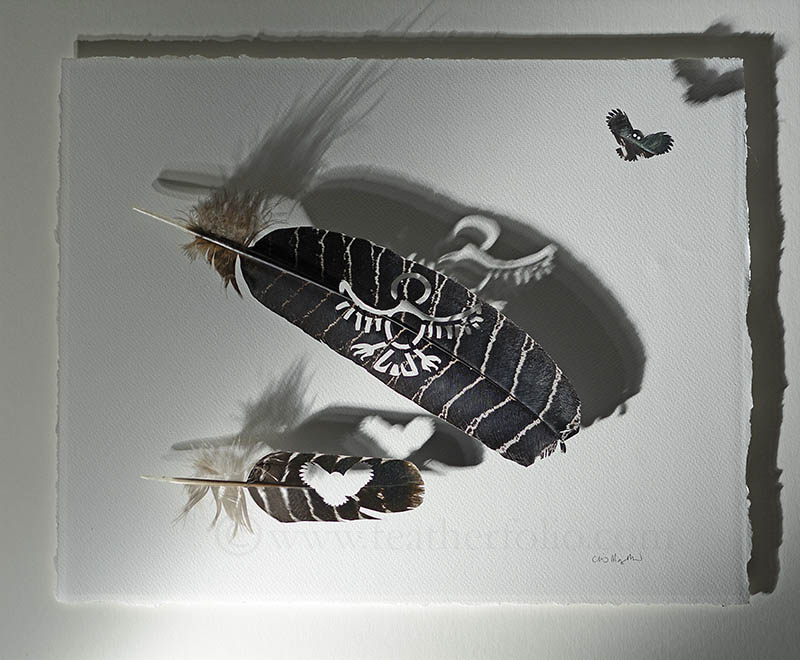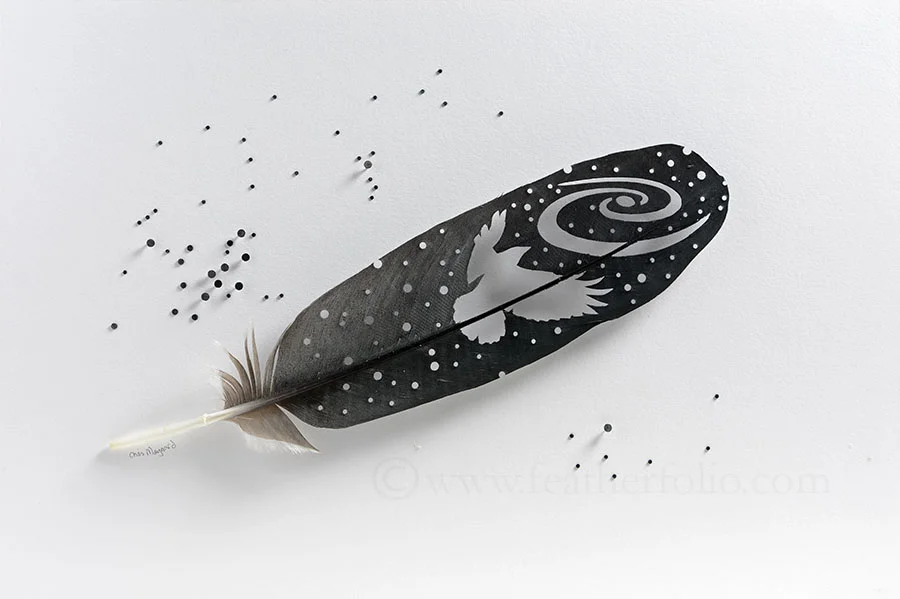The darkest days of year are for gathering around the fire. Shining out of fireplaces and windows of wood stoves, and on the floors of teepees, wigwams, and longhouse. Since darkness reins, our tendency toward telling stories and seeing the world as myth comes forth.
Normally unnoticed shadows become prominent. The sun is gone so the fire becomes its substitute but shining from below. Which encourages the shadows to dance around and above us on the walls.
This is my first borrowed north-west coast native design style, modified for use in a carved feather.



















